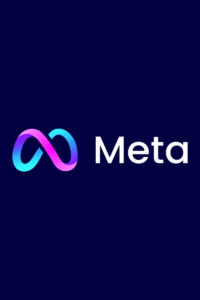Amazon’s AI Revolution: A Game Changer in the AI Race?
Amazon is making its boldest move in artificial intelligence with the upcoming launch of advanced reasoning AI under its Nova brand. Set for release in June 2025, this AI model is designed to challenge the dominance of OpenAI, Anthropic, and Google in the rapidly evolving AI landscape.
With Nova AI’s hybrid reasoning capabilities, aggressive pricing strategy, and deep integration with AWS, Amazon isn’t just competing with existing AI leaders—it’s positioning itself as a dominant force in the AI revolution. Here’s what you need to know about Amazon’s biggest AI play and what it could mean for businesses, marketers, and the future of AI-driven technology.
A Strategic Shift in Amazon’s AI Playbook
For years, Amazon has supported AI development, investing in promising AI firms rather than building its own models. One of its biggest moves in this space was an investment of $8 billion in Anthropic, a leading AI research company. However, the launch of Nova AI marks a clear departure from this approach—Amazon is no longer just backing AI. It’s building it.
By developing its own AI infrastructure, Amazon is taking a step toward greater independence in the AI space. This shift isn’t just about innovation—it’s about control. Instead of relying on third-party partnerships, Amazon is positioning itself to compete directly with AI leaders while strengthening its ecosystem.
This move could have major implications for AWS, specifically in integrating Nova AI into Amazon Web Services. It could provide businesses with access to powerful AI-driven solutions at scale—potentially bundled with AWS cloud services. Given AWS’s dominance in cloud computing, this integration could make Amazon a formidable player in enterprise AI solutions, further solidifying its position as a leader in both AI and cloud technology. Let’s take a deeper look at what this entails.
Hybrid Reasoning: The Future of Smarter AI
Amazon’s Nova AI model will integrate hybrid reasoning capabilities. This feature blends rapid response generation with complex multi-step problem-solving. This approach mirrors recent advancements in Anthropic’s Claude 3.7 Sonnet, which leverages deeper contextual understanding for more nuanced decision-making.
AI models will soon deliver more precise and sophisticated answers for businesses and marketers, making AI-powered customer support, automation, and content generation significantly more efficient.
Imagine chatbots that don’t just provide generic responses but can understand complex inquiries, solve multi-layered problems, and provide more tailored solutions—a major leap in AI-powered marketing.
Competing on Cost & Performance
One of Amazon’s most intriguing plays in this space is its aggressive pricing strategy. With the rise of ultra-low-cost models like DeepSeek, Amazon is looking to undercut its competitors while still delivering premium AI capabilities.
The goal? To rank among the top five AI models, promising a balance of affordability and high-quality performance. This move could make advanced AI more accessible to businesses, allowing startups, agencies, and enterprises to leverage cutting-edge AI without breaking the bank.
For digital marketers, this could mean access to more cost-effective AI-driven advertising solutions, enhanced content creation tools, and data analysis capabilities while maintaining a lower overhead.
Amazon’s AI-Powered Alexa+
Beyond Nova, Amazon is also working on Alexa+, an upgraded version of its AI-powered assistant. This suggests that Amazon plans to redefine voice AI, offering a more contextually aware, intelligent, and responsive assistant to handle more complex queries and tasks.
For digital marketers and e-commerce brands, this evolution could lead to more personalized and dynamic customer interactions. From voice-powered shopping to AI-driven customer service enhancements. If Alexa+ successfully integrates Amazon Nova’s AI reasoning model, it could become a serious competitor to Apple’s Siri, Google Assistant, and even OpenAI’s ChatGPT-powered assistants.
How Onimod Global Can Help Your Business Leverage AI
At Onimod Global, our AI and data-driven agency understands that machine learning is revolutionizing marketing, but technology alone isn’t enough. The key to success is to balance AI-driven efficiency with human creativity and strategic insight. AKA, the ‘human touch’.
As AI evolves, businesses must adapt to stay ahead—but automation should never replace authentic engagement. That’s why we combine the power of AI with a human-first approach to help your marketing strategies remain effective, relatable, and results-driven.
Here’s how Onimod Global can help your business thrive in this AI-powered future:
- AI-Powered Advertising Solutions: Optimize PPC campaigns with AI-driven bidding strategies and Leverage AI for real-time ad performance analysis.
- AI-Driven Data Analytics: Gain deeper insights into customer behavior, trends, and engagement metrics.
- AI-Enhanced Content Marketing: Create highly personalized email campaigns that combine AI’s data-driven insights with human-crafted messaging that resonates.
Final Thoughts
With AI becoming a key driver of marketing efficiency, businesses that fail to integrate AI-driven strategies risk falling behind. This shift presents game-changing opportunities for businesses and marketers to integrate smarter AI into their operations. But automation shouldn’t replace strategy, emotion, or connection—which is why Onimod Global ensures your campaigns are data-driven yet deeply human.
At Onimod Global, we help businesses like yours leverage AI correctly—enhancing automation while keeping a personalized, strategic, and creative approach at the core. Whether you want to automate your campaigns, optimize your PPC strategy, or enhance content marketing with AI, we’re here to help.
Contact us today to learn how AI can transform your business.
Frequently Asked Questions: Amazon AI
What is Amazon Nova AI, and how does it compare to ChatGPT?
Amazon Nova AI is an advanced reasoning AI model designed to compete with ChatGPT, Claude, and Google’s Gemini models. Unlike ChatGPT, Nova aims to integrate hybrid reasoning capabilities, making it more adept at multi-step problem-solving and complex queries.
How will Amazon’s AI impact digital marketing?
Amazon’s AI will likely enhance voice search, advertising automation, and AI-driven content generation. This could potentially help businesses create more personalized and data-driven marketing campaigns.
What does this mean for AI pricing?
Amazon plans to undercut competitors on pricing, making high-quality AI more affordable. This could lower costs for businesses looking to integrate AI into their marketing strategies.
How can businesses prepare for Amazon’s AI advancements?
Businesses can start by exploring AI-powered marketing tools, automating workflows, and optimizing their content for AI-driven search engines. Partnering with a digital marketing agency like Onimod Global can help you stay ahead of these AI trends.
Disclaimer: This article is for informational purposes only and does not constitute financial, investment, or business advice. AI developments are rapidly evolving, and businesses should conduct their research before making decisions based on emerging technologies. For more information, contact the digital marketing professionals at Onimod Global today.










